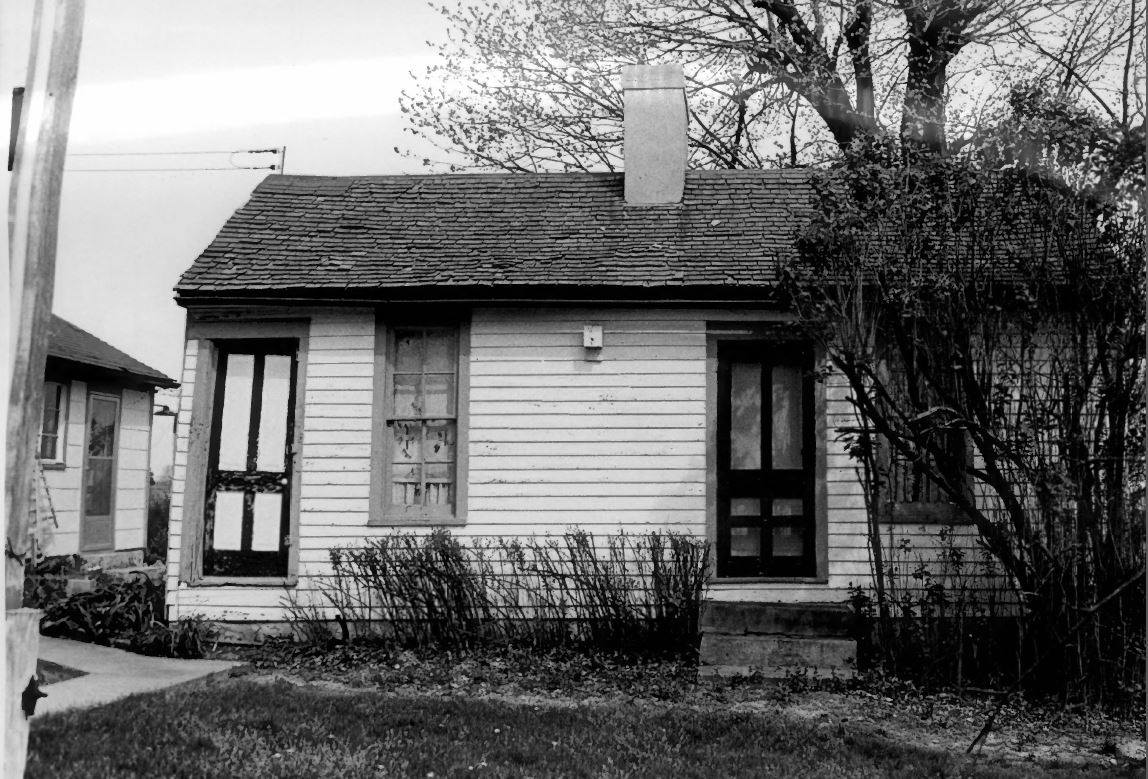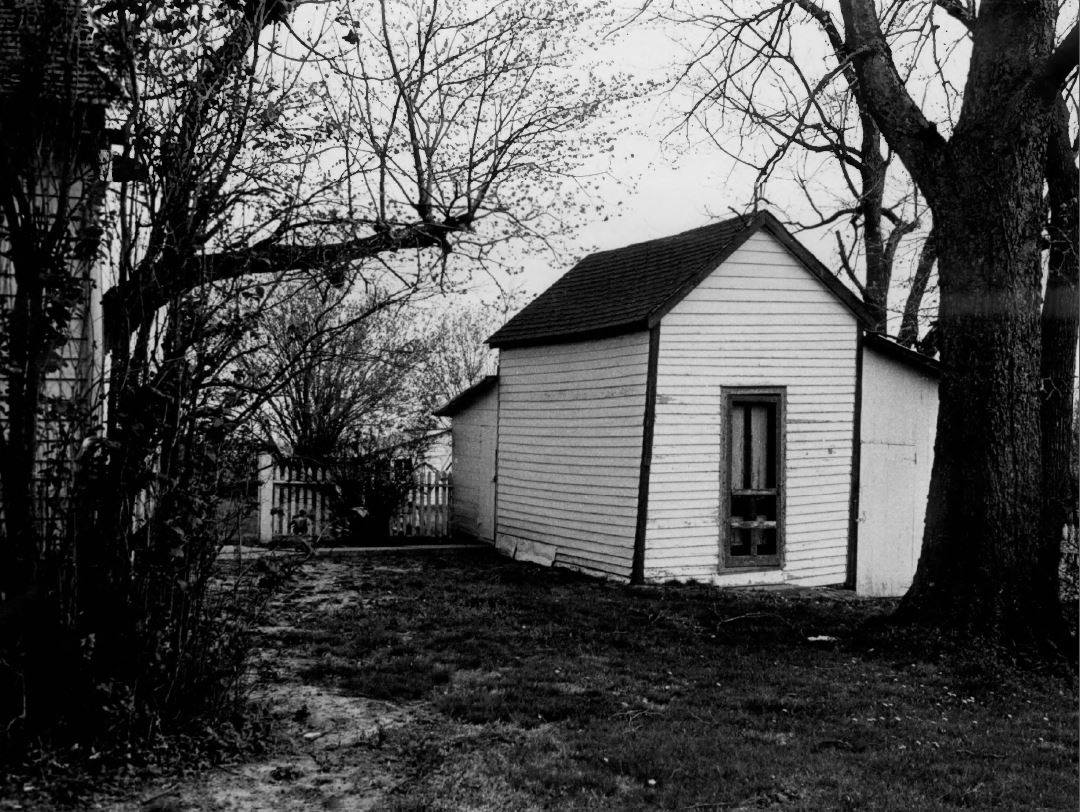From Missouri’s Little Dixie Heritage Foundation facebook page




Locust Hill, near Brunswick, Chariton County, MO
William Herring House and Farm
11 Slaves in 1860 and 2 slave houses
Locust Hill is a two story Second Empire style house built with rusticated faux stone wood siding, mansard roof, and cupola. The house was originally built just after the Civil War on the original family sites founded in c. 1830s. The Herring family owned 4 slaves in 1840, 2 in 1850, and 11 slaves in 1860. Another Herring relative in Brunswick owned more slaves. The rural home near Brunswick includes its original residence, garage, privy, root cellar, shed, smokehouse, summer kitchen/ slave quarter, chicken yard, two garden areas, a large yard and some surrounding land.
“The site of Locust Hill was first inhabited by William David Herring, who moved with his mother and brother, Jonathan, from Maryland about 1837 after purchasing over 1200 acres of farmland near Brunswick, Missouri. The building which today is known as the summer kitchen is possibly the first home on the site built by Herring ca. 1837. Herring married Nancy Turner of Kentucky in 1847. Their son, Lloyd, became a prominent local carpenter, farmer and stock raiser. In the late 1840’s the California gold rush drew him west. Upon his return he became a judge of the Chariton County Court and organizer of the Chariton County Bank.
The affluent Magruder family first moved to a farm near Brunswick when Napoleon Bonapart Magruder, his wife, Abbie, son Waverly Theophilus, and 43 slaves emigrated there from Amherst County, Virginia. On November 5, 1863 Waverly was married to Johanna Herring, daughter of William David and Nancy Turner Herring of Locust Hill (Rucker, p. 3, Gehrig and Smith, pp. 319, 805 and 828). It is quite probable that a large home was constructed at Locust Hill at this time for the newlyweds. William had died in 1862 and the property eventually entered the Magruder family through an inheritance by Johanna Herring Magruder. In addition, due to the wealth and position of the Magruder family, it is probable that Waverly would have desired a substantial home for his family. Moreover, a family tradition records that during the Civil War, which raged in the area between 1861 and 1864, the family was forced to hide for a time in the cellar of the slave quarters while Union soldiers occupied the main house. The summer kitchen, with its partial cellar and hand hewn construction, is a likely candidate for these slave quarters, as well as the possible site for the original house at Locust Hill. If the latter supposition is correct, the original house must have been vacated and its use altered before 1864 and another larger house must have been constructed nearby before this date if the family tradition is given credence.
Design details of Locust Hill also indicate a probable early 1860’s date for the construction of the north portion of the house which, as indicated in Item #7, was built with a low pitched roof prior to the erection of the south portion. The elongated windows, bracketed eaves, original hipped roof and asymmetrically placed tower suggest that the house was originally constructed in the Italian Villa Style, a system of ornament already popular in Virginia, the original home of the Magruders, in the 1850’s. In Missouri, this style of construction fits nicely into the decades of the 1860’s and 1870’s. Moreover, in this state frame construction imitating rusticated masonry such as that exhibited at Locust Hill, is associated with the Italianate style. One example is the Prigmore Homestead (ca. 1860) in Pettis County, which, though Taking a tower, bears a resemblance to the postulated original appearance of the house at Locust Hill. It was probably that, with the advent of the Second Empire Style after the Civil War and the enlargement of the Magruder family, which has always been noted for its fecundity, the south portion of the house was constructed and the roofline of the northern part including the tower was altered. This could have occurred as early as ca. 1870, but it probably took place in the decade of the 1880’s, if the Eastlake style of the interior woodwork is any indication. The Magruder family continued to occupy Locust Hill until 1973 when the remaining members of the family sold it to its present owners.
Missouri boasts several other fine examples of Second Empire residential design, a few of which are already on the National Register of Historic Places. These include the Blosser House (1880), Malta Bend, Saline County; the Governor’s Mansion (1872), Jefferson City, Cole County; the Krause Mansion, (1883), Platte City, Platte County; and Rivercene (1869), near Boonville in Howard County.”
NATIONAL REGISTER OF HISTORIC PLACES
INVENTORY – NOMINATION FORM
Locust Hill, McGruder Estate
October 31. 1979
“WILLIAM D. AND LLOYD H. HERRING, farmers and stock raisers. The Herring family have been long and prominently identified with the agricultural and general interests of Chariton County. The father, William D. Herring, born in Maryland, April 2d, 1817, came out to Missouri and made his home in Chariton when a young man seventeen years of age, in 1836. He had learned the carpenter’s trade as he grew up in Maryland (at which he had worked from his fifteenth year), and after coming to this county he followed it for a number of years. But he also turned his attention to farming, and finally devoted himself exclusively to this occupation, at which he has been remarkably successful. He now owns 2,000 acres of fine land and has it all improved, divided up into different farm. Stock raising, as incidental to farming, has also been source of profit to him in the pursuit of his agricultural interests. He was married in December, 1847, to Miss Nancy Turner, originally of Kentucky, but she survived her wedding day but two years, dying December 15th, 1849. She left two sons, Jeremiah and Lloyd H.
Lloyd H., the younger of these, was born April 19th, 1849, and was reared on his father’s farm. As he grew up he attended the common schools, and during the years 1864 and 1865 had the benefit of a two years’ course in the Illinois College, at Jacksonville, Illinois. Returning home after his college course, _he resumed farming and continued it without interruption until 1871, when he engaged in the lumber trade at Brunswick, which he followed for about two years, not, however, discontinuing farming in the meantime. He has a fine farm of nearly a section of land, well improved and well stocked. Mr. Herring, the son, is also a large stockholder in the Charlton County Exchange Bank, and is a director in that institution. He is one of the most intelligent, progressive agriculturists in the county, and one of its worthiest, most highly respected citizens.”
History of Chariton and Howard Counties, Missouri, 1883.
